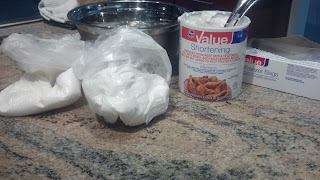Here are the materials we used and the steps we followed to make our solar cooker.
Materials:
Cardboard box
Aluminum foil
Plastic bags or
plastic wrap
Skewer
Black construction
paper
Marshmallows
Chocolate bar
Graham crackers
Procedure:
1. Cut a window in the top of
the box
2. Cover the window with
plastic, line the inside of the box with aluminum foil.
3. Glue the black piece of
construction paper to the inside bottom of the box.
4. Place the S'mores in the box,
directly beneath the window.
5. Place a thermometer inside
the box, and one outside the box.
6. Prop the flap with a skewer
and place the box in direct sunlight.
7. After a few hours, return to
the solar cooker and remove the cooked S'mores. Eat!
8.Check the temperature inside
the box, and outside the box.
Results:
The solar cooker cooked our marshmallows and melted the chocolate. The S'mores were delicious! The temperature in the solar cooker was more than 110 degrees Fahrenheit. The temperature outside of the solar cooker was only 100 degrees Fahrenheit.




